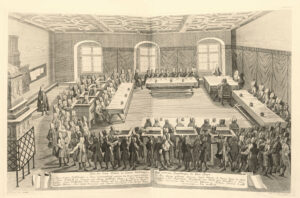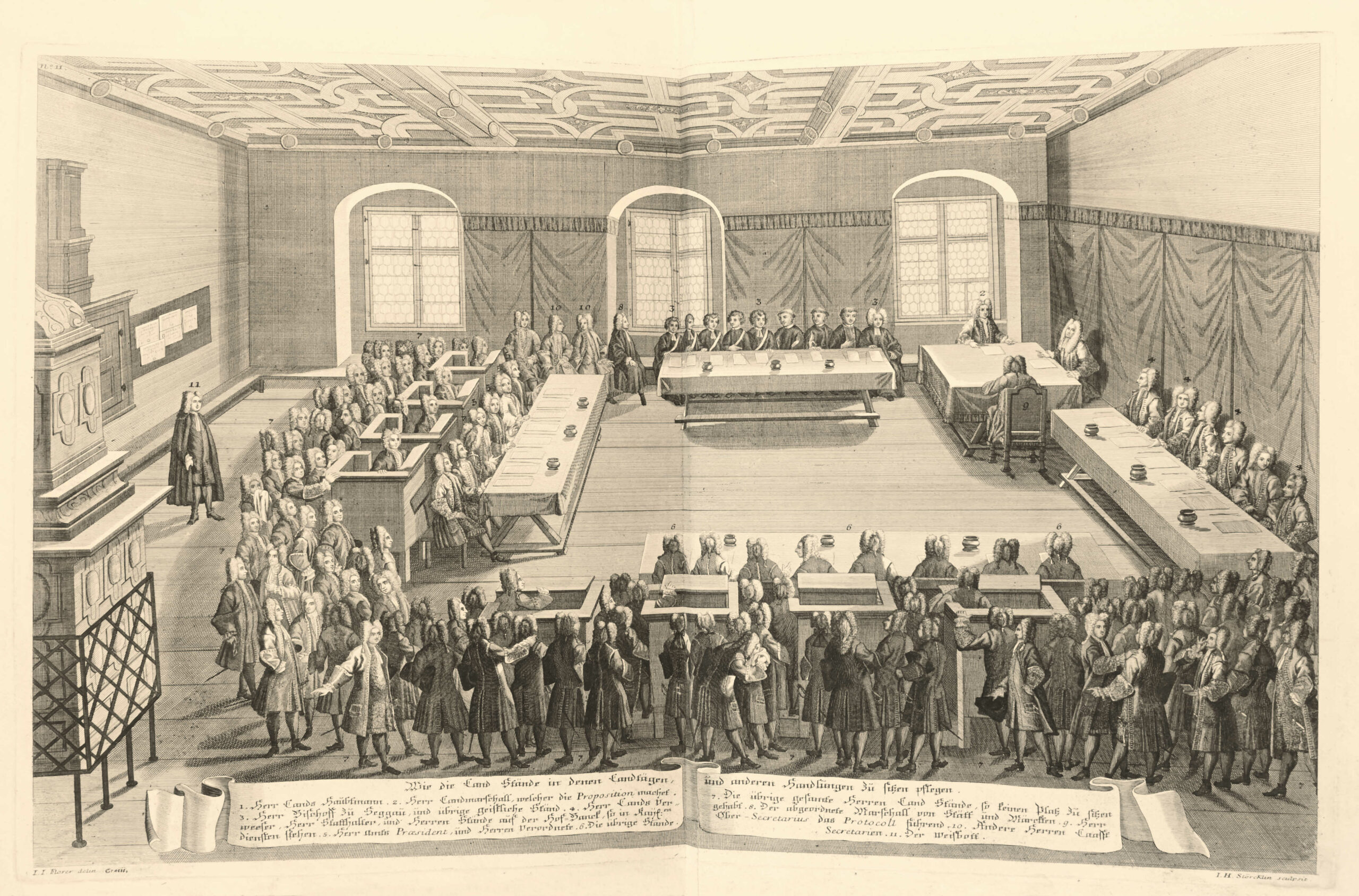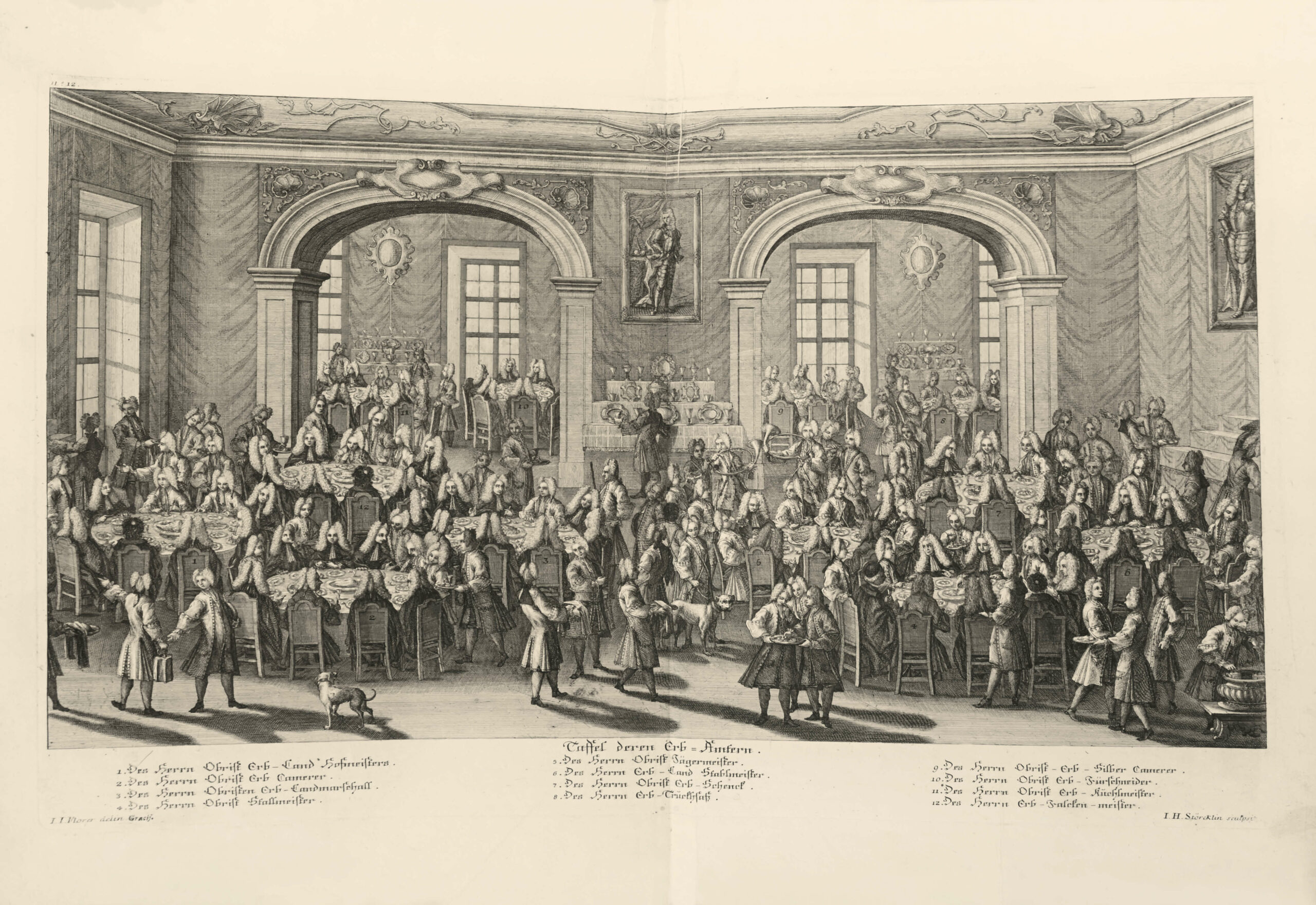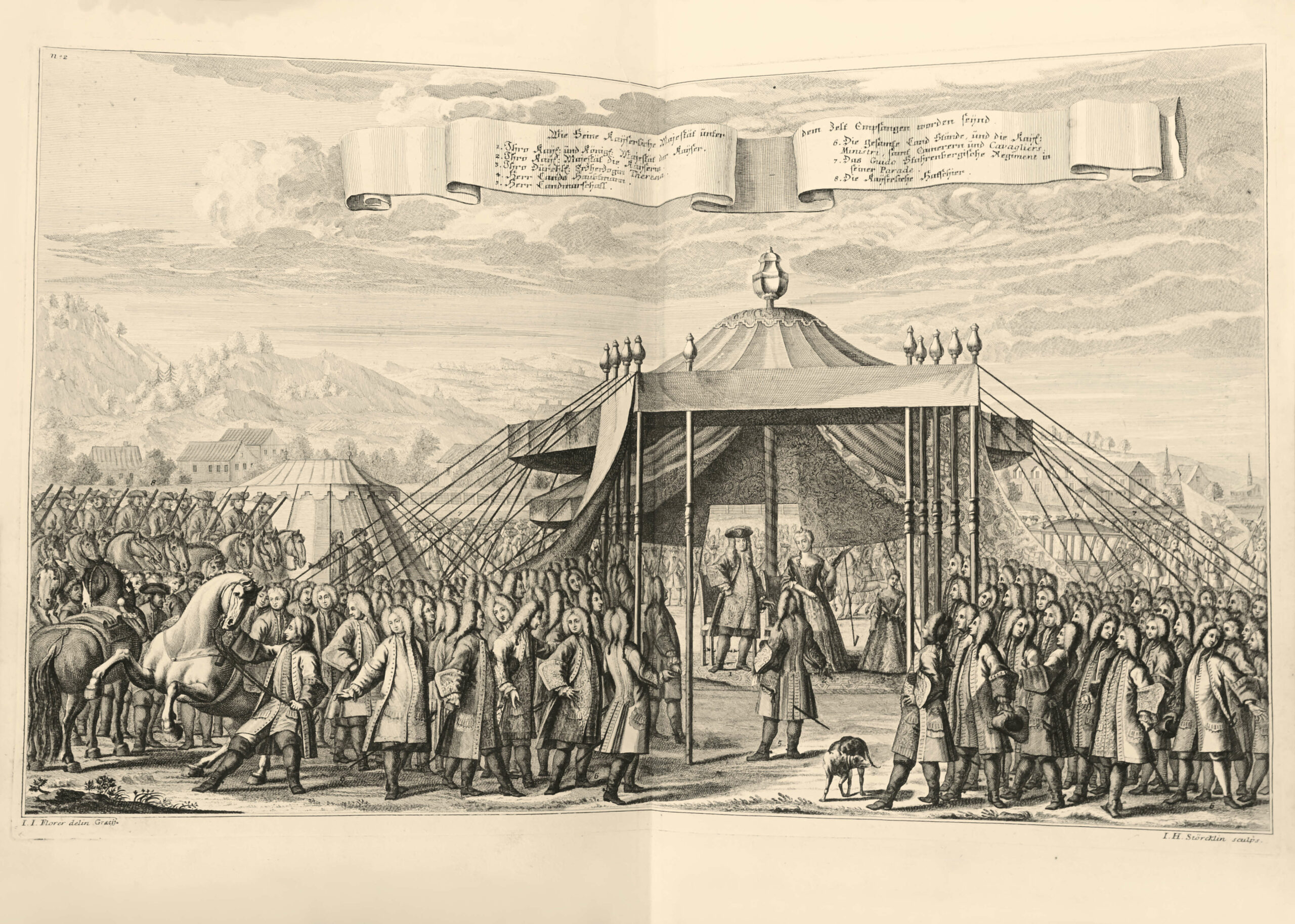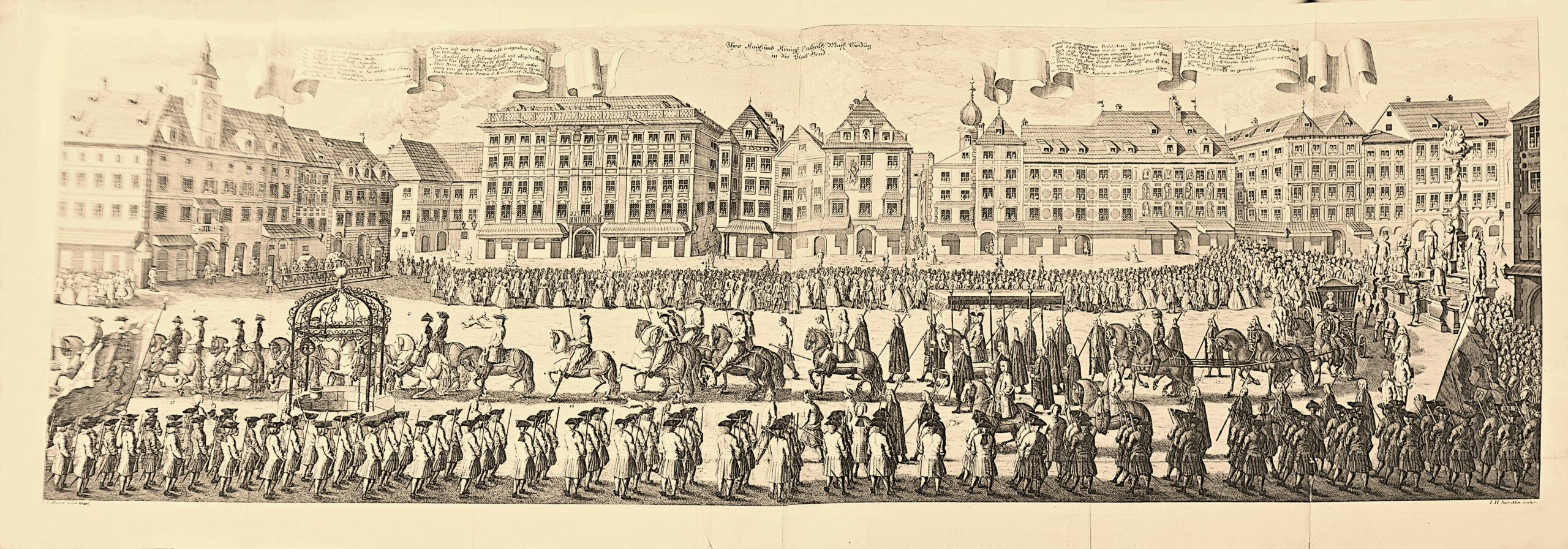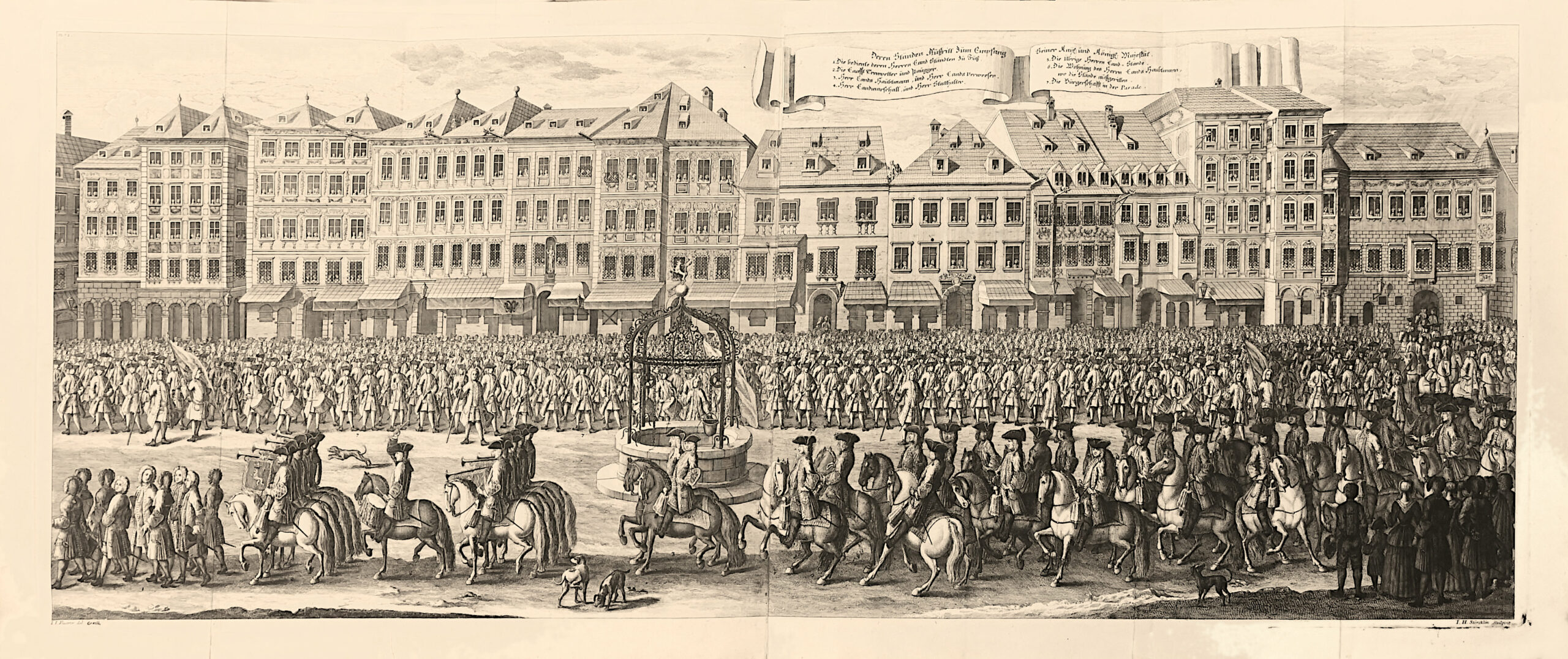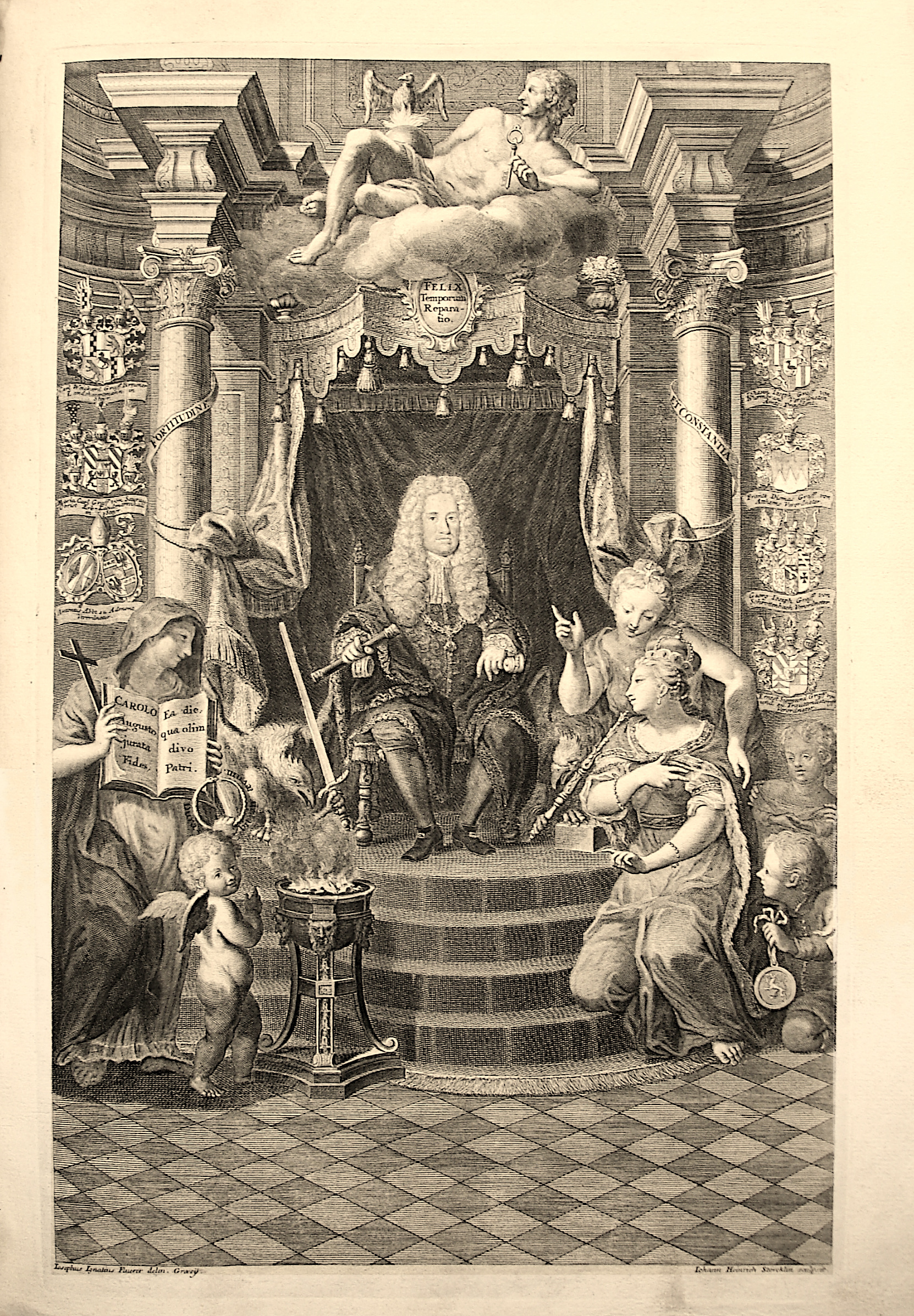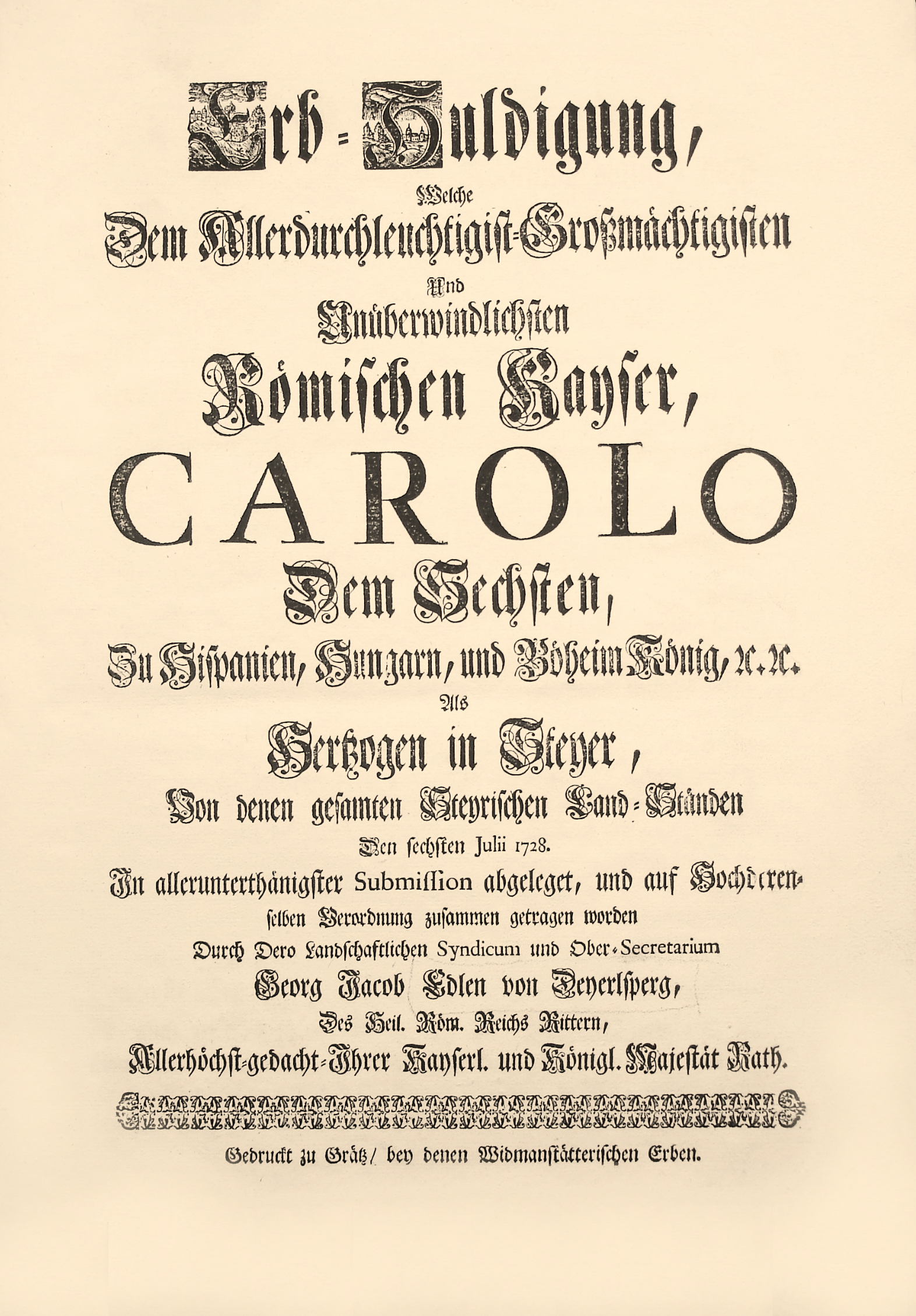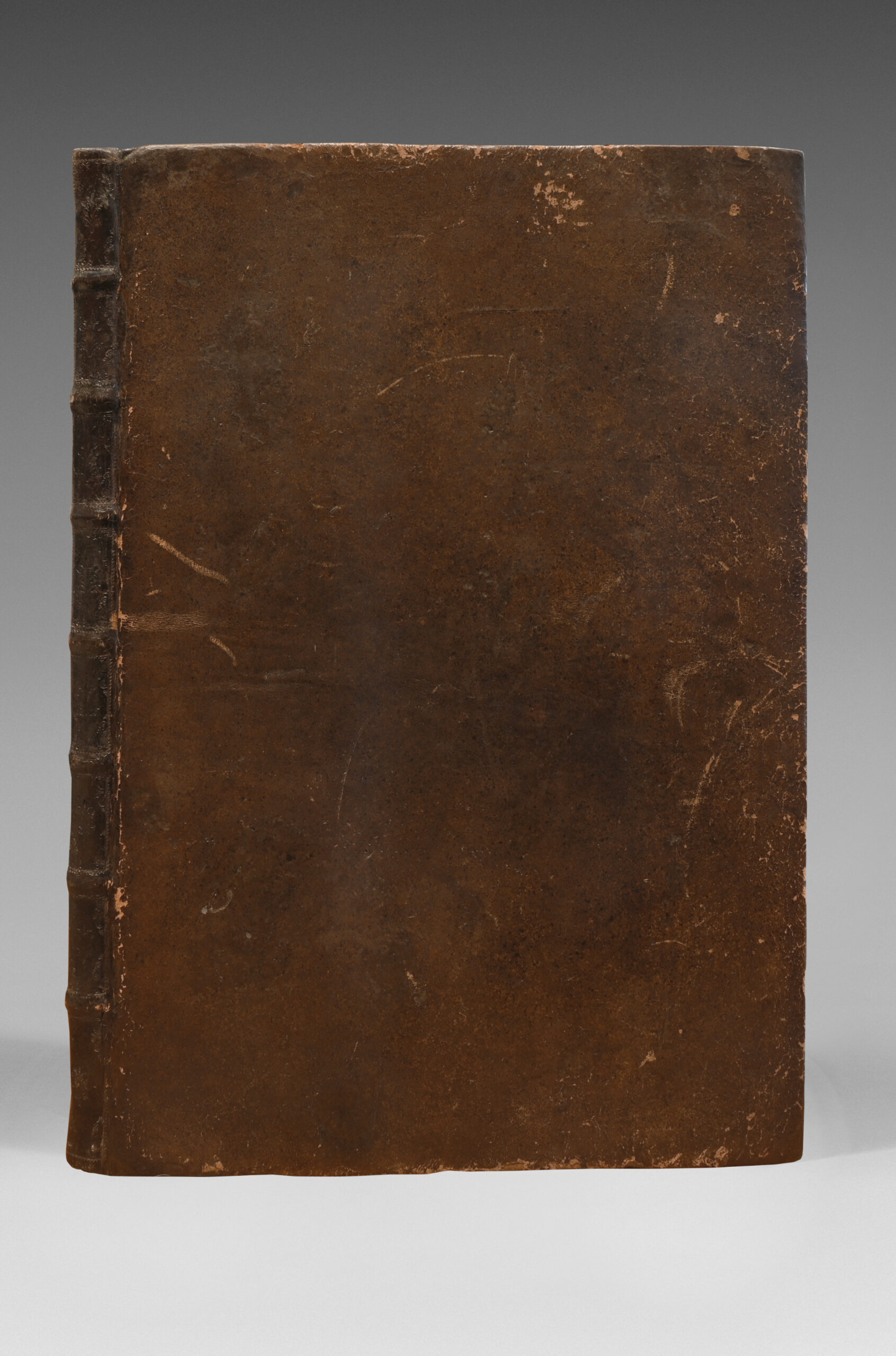Oath to German Emperor Charles VI… as Duke of Styria, by the Provincial States of Styria, July 6, 1728, by G.-J. von Deyerlsperg.
Grätz, n.d. [1740].
Large folio with 1 frontispiece portrait, (2) ll., 91 pp., 12 plates including 9 on double-page and 3 folding, 1 folding map, 1 small tear restored without loss p. 49. Brown rubbed roan, red edges. Contemporary binding.
466 x 332 mm.
Extremely rare first edition of this book of feasts and Entrance printed on very large Holland paper.
Lipperheide Sc 15; Vinet 680.
Draughtsman: Joseph Ignatius Flürer.
Engraver: Johan Heinrich Störchlin.
“This prestigious publication illustrates the ceremonies at which Charles VI was sworn in as Duke of Styria by the Provincial States of Styria in July 1728.
The engravings are by Andréas Trost, J. J. Florer and J. H. Störcklin: entry of the King and Queen into Grätz (2 very large plates of processions), religious ceremonies and feasts, 2 magnificent engraved views of the town, 1 geographical map and a beautiful allegorical frontispiece with the Emperor on his throne. The two superb feast plates show the room of the imperial couple and that of the officers of the Emperor’s Household.
As in most copies (including the 2 in the Austrian National Library, the one in Yale University Library and all the copies we have been able to consult in Public Libraries), plates 5 and 9 are missing. There is no doubt that a court order was issued for their deletion, so they have survived only in very few copies (we have not located any copy containing these two plates).
Emperor Charles VI was the father of Maria Theresa of Austria. This peace-loving prince was forced to wage war throughout his life. It should be recalled here – a terrible mission for a gastronome bibliographer – that Charles VI died as a result of poisoning caused by a dish of mushrooms. Voltaire liked to point out that this little culinary cause changed the face of events in 18th-century Europe.” (Les Fastes de Bacchus et de Comus, 538).
The superb illustration consists of a frontispiece and 13 copper-engraved plates:
– frontispiece featuring the portrait of Charles VI; pl. signed “Iosephus Ignatius Fluerer delin. Gracÿ” and on the right ‘Iohann Heinrich Störcklin sculpsit’.
– plate 1: “Wie die land Stände in denen land tagen und anderen handsungen zu sitzen pflegen”; pl. signed lower left “I.I. Florer delin gracii” and right “I.H. Störcklin sculpsit”.
– plate 2: map of Styria “Des Herzogthumb Steÿer neü und verbesserte geographische Endtwerffung”; unsigned plate.
– plate 3: procession in the city of Graz “Deren Ständen Auftritt zum Empfang Seiner Kaÿ.e und König.e Majestät”; plate signed lower left “I.I. Florer del gracii” and right “I.H. Störcklin sculpsit”.
– plate 4: Charles VI under a tent “Wie seine Kaÿserliche Majestät unter dem zelt empfangen worden seÿnd”; pl. signed bottom left “I.I. Florer delin gracii” and right “I.H. Störcklin sculps”.
– plate 5: view of the city of Graz “Wahre abbildung der Kayserlich- und lands-fürstlichen haubt stadt Gratz, wie selbe von unter gegen auf gang zu Sehen ist”; unsigned plate.
– plate 6: imperial procession “Ihro Kaÿ.e und König.e cathol.e maj.e Einzug in die Statt Graz”; pl. signed lower left “I.I. Florer delin gracii” and right “I.H. Störcklin sculpsit”.
– plate 7: view of the city of Graz “Wahre abbildung der Kayserlich- und lands-fürstlichen haubt stadt Gratz, wie selbe von unter gegen untergang zu Sehen ist”; unsigned plate.
– plate 8: “Wie Seine Kaÿ.e Maÿ.e durch ihre Commissarien in Landhaus die Erb-Huldigungn verlanget haben”; pl. signed lower left “I.I. Florer del gracii” and right “I.H. Störcklin sculpsit”.
– plate 9: “Der Zug Ihro Maÿ.e des Kaisers von der Burgg in die Hof Kirchen”; pl. signed bottom left “I.I. Florer delin gracii” and right “I.H. Störcklin sculpsit”.
– plate 10: Ceremony in the church “Dass Hoch-Amt in der Hof-Kirchen beÿ St Aegidÿ”; pl. signed bottom left “I.I. Florer delin gracii” and right “I.H. Störcklin sculpsit”.
– plate 11: Charles VI under a canopy “Die Erbhuldigung”; pl. signed lower left “I.I. Florer del. gracii” and right “I.H. Störcklin sculpsit”.
– plate 12: banquet “Wie Ihro Maÿ.e der Kaiser nach der huldigung gespeiset haben”; pl. signed lower left “I.I. Florer del. gracii” and right “I.H. Störcklin sculpsit”.
– plate 13: banquet “Taffel deren Erb-Ämtern”; pl. signed lower left “I.I. Florer delin gracii” and right “I.H. Störcklin sculpsit”.
Wood engravings: decorated letters, headpieces, fleurons.
“The landscape commissioned Franz Ignaz Flurer, the house painter to the Counts of Attems, with the designs for this series of engravings. The designs were engraved in copper by the Swiss-born Johann Heinrich Störcklin, who worked in Augsburg, and the engraver Christoph Dietell from Graz.
Only one copy of the engraving The Emperor taking the oath has survived. It is missing from the other volumes of engravings because the sovereign, in view of his imperial dignity, did not wish to take the oath of allegiance to the privileges of the estates in public. Understandably, he was also against the publication of this act, which was all too contrary to his absolutist self-image. Charles VI had allowed 17 years to pass before he submitted to this ceremony, having already taken office in his hereditary lands in 1711. It was to be the last hereditary homage in Styria because, unlike in other countries, the rulers subsequently dispensed with this act. The representation of the estates and the absolute monarchy had largely become estranged from each other.” (Walter Brunner).
The frontispiece with an allegorical portrait of Emperor Charles VI as Duke of Styria, the map shows the territory of Styria, the large-format and detailed copper plates with 2 large general views of the city of Graz as well as illustrations of the festivities”.
Our research has failed to locate copies with plates numbered 5 and 9 in any of the world’s institutions or in the archives of past sales.
“The entrance of the king and queen into Grätz, the high mass in the church of St. Aegidius, the swearing in of the oath by the States, the royal feast, the feast of the officers of the emperor’s household, very beautiful views of the town of Grätz and the surrounding area, an allegorical frontispiece, very well composed and very well engraved, make this publication very interesting. Omitted by Brunet.
Charles VI was the father of Maria Theresa. This peace-loving prince was always at war. He died of mushroom indigestion”. (Vinet, 680).
A very rare work of celebration and gastronomy.
